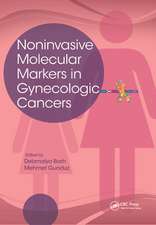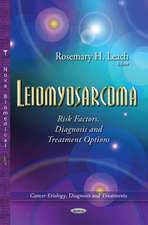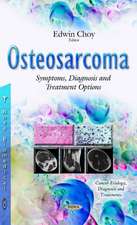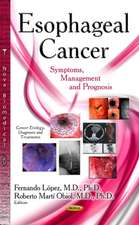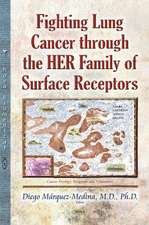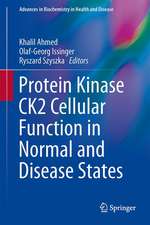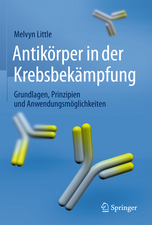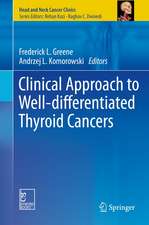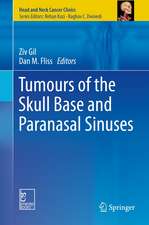Biomarker Discovery in the Developing World: Dissecting the Pipeline for Meeting the Challenges
Editat de Sanjeeva Srivastavaen Limba Engleză Hardback – 21 oct 2016
| Toate formatele și edițiile | Preț | Express |
|---|---|---|
| Paperback (1) | 651.37 lei 38-44 zile | |
| Springer India – 29 iun 2018 | 651.37 lei 38-44 zile | |
| Hardback (1) | 718.82 lei 3-5 săpt. | |
| Springer India – 21 oct 2016 | 718.82 lei 3-5 săpt. |
Preț: 718.82 lei
Preț vechi: 756.65 lei
-5% Nou
Puncte Express: 1078
Preț estimativ în valută:
137.56€ • 140.88$ • 114.43£
137.56€ • 140.88$ • 114.43£
Carte disponibilă
Livrare economică 26 februarie-12 martie
Preluare comenzi: 021 569.72.76
Specificații
ISBN-13: 9788132228356
ISBN-10: 8132228359
Pagini: 190
Ilustrații: XI, 118 p. 28 illus. in color.
Dimensiuni: 178 x 254 x 14 mm
Greutate: 0.49 kg
Ediția:1st ed. 2016
Editura: Springer India
Colecția Springer
Locul publicării:New Delhi, India
ISBN-10: 8132228359
Pagini: 190
Ilustrații: XI, 118 p. 28 illus. in color.
Dimensiuni: 178 x 254 x 14 mm
Greutate: 0.49 kg
Ediția:1st ed. 2016
Editura: Springer India
Colecția Springer
Locul publicării:New Delhi, India
Cuprins
Chapter 1: Exigencies of biomarker research in developing world: A focus on the dearth of biobanking resources.- Chapter 2: Geographic pervasiveness of cancer: Prospects of novel biomarker and therapeutic research in developing countries using OMICs approaches.- Chapter 3: Omics data processing and analysis.- Chapter 4: Basics of mass spectrometry and its applications in biomarker discovery.- Chapter 5: Angel Philanthropy and Crowdfunding to Accelerate Cancer Research in Developing World.- Chapter 6: Delivering on the Promise of Bioeconomy in Developing World: Link it with Social Innovation and Education.- Chapter 7: Role of proteomics in characterization of biosimilar products.- Chapter 8: Regulatory norms and intellectual property rights for biomarker research.
Notă biografică
Srivastava, Sanjeeva Associate Professor, Indian Institute of Technology Bombay, India. Proteomics is truly a global science with contributors from numerous countries and continents. Dr. Srivastava is an active contributor to global proteomics science and innovation. He serves on the Executive Committee of the Proteomics Society of India, and is a member of HUPO and US-HUPO. He contributes actively to the “HUPO Website and Social Media Committee” as a member and the Human Infectious Diseases HPP initiative as a coordinator. In HUPO conferences he has participated as invited speaker, session chair, and judge. In an effort to enhance proteomics education and awareness among the community and citizens, his group has recently developed a proteomics documentary, which portrays the proteomics journey from lab to “innovation-in-society”. As a Canadian trained in proteomics at Alberta and Harvard universities, he returned to India in 2009 and has established an innovative proteomics laboratory at the IITB. The research focus of Sanjeeva’s team centers on using high-throughput proteomics in brain tumors and infectious diseases with over 75 publications accomplished in a span of six years.
He has organized two successful conferences – PSI-2014 and Targeted Proteomics International Symposium in 2015. He has published three special issues, “Proteomics in India” for Journal of Proteomics; “Proteomics Research in India” for Nature India, and “Protein Arrays” for Proteomics. Having extensive teaching experience at IITB and experience of conducting proteomics courses at CSHL provided him with the background to increase proteomics education for the global community. One of his special contributions has been the development of e-learning resources (MOOC, Virtual Proteomics Laboratory). Taken together, his series of research and teaching initiatives is contributing to and fully synchronized with the mission and current actives of HUPO. He continues to develop proteomics science and innovation together with and for the next generation of keen students, researchers, and the research and education commons in Asia and global HUPO community.
Textul de pe ultima copertă
This book is oriented towards post-graduates and researchers with interest in proteomics and its applications in clinical biomarker discovery pipeline. Biomarker discovery has long been the research focus of many life scientists globally. However, the pipeline starting from discovery to validation to regulation as a diagnostic or therapeutic molecule follows a complex trajectory. This book aims to provide an in-depth synopsis on each of these developmental phases attendant to biomarker “life cycle” with emphasis on the emerging and significant role of proteomics. The book begins with a perspective on the role of biorepositories and need for biobanking practices in the developing world. The next chapter focuses on disease heterogeneity in context to geographical bias towards susceptibility to the disease and the role of multi-omics techniques to devise disruptive innovations towards biomarker discovery. Chapter 3 focuses on various omics-based platforms that are currently being usedfor biomarker discovery, their principles and workflow. Mass spectrometry is emerging as a powerful technology for discovery based studies and targeted validation. Chapter 4 aims at providing a glimpse of the basic workflow and considerations in mass spectrometry based studies. Rapid and aptly targeted research funding has often been deemed as one of the decisive factors enabling excellent science and path breaking innovations. With theneed for sophistication required in multi-omics research, Chapter 5 focuses on innovative funding strategies such as crowdfunding and Angel philanthropy. Chapter 6 provides the latest advances in education innovation, the premise and reality of bioeconomy especially in a specific context of the developing world, not to mention the new concept of “social innovation” to link biomarkers with socially responsible and sustainable applications. Chapter 7, in ways similar to biomarkers, discusses the biosimilars as a field that has received much focus and prominence recently due to their immense potential in clinical and pharmaceutical innovation literatures. The broader goal post-biomarker discovery is to translate their use in clinics. However, the road from bench-to-bed side is arduous and complex that is subject to oversight from various national and international regulatory bodies. Chapter 8 underscores these regulatory science considerations and provides a concise overview on intellectual property rights in biomarker discovery. Thus, this book contributed by eminent biomarker scientists, clinicians, translational researchers and social scientists holistically covers the various facets of the biomarker discovery journey from “cell to society” in developing world. The lessons learned and highlighted here are of interest to the life sciences community in a global and interdependent world.
Caracteristici
Overviews the biomarker discovery pipeline Highlights the generic and specific challenges involved in this pipeline and amenable measures to overcome these hurdles Written with the perspective of challenges faced by the developing world, which are unique as compared to the hurdles faced by the developed world

